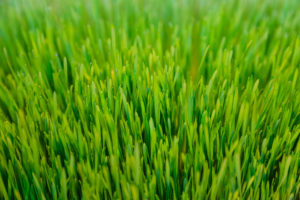
If you have been in a natural health store you have no doubt seen either free sample of wheatgrass shots being passed out or self-serve wheatgrass kiosks.
Many people are turned off by the very bitter and what some would call disgusting taste. However, wheatgrass is an acquired taste. And out of many supplements on the market. You may definitely want to try to get used to the taste due to all the amazing health benefits it can offer.
In this recent post from Dr. Merolca’s website, he gives you everything you wanted to know about wheatgrass and why you should add it to your supplement regimen:
“What Are the Benefits of Wheatgrass?
Story at-a-glance
- Nowadays, wheatgrass is known as a nutritious ingredient that’s added to various juice blends. Learn more about what wheatgrass, especially the organic variety, has to offer, and see how you can grow it at home
If you’re wondering what wheatgrass is, it’s actually a chlorophyll-rich herb that’s acquired from the cotyledons of the wheat plant (Triticum aestivum).1
Although wheatgrass rose to fame quite recently, its first instance of use can be traced back 5,000 years to the ancient Egyptian and Mesopotamian civilizations. In particular, the Egyptians prized wheatgrass for its effects on health and vitality.
Fast forward to the 1930s, agricultural chemist Charles Schnabel’s experiments with young plants paved the way for the discovery of wheatgrass’ benefits.2
Nowadays, wheatgrass is known as a nutritious ingredient that’s added to various juice blends. Learn more about what wheatgrass, especially the organic variety, has to offer, and see how you can grow it at home.
What Does Wheatgrass Do for Your Health?
Most people know that wheatgrass is good for juicing, and as such add high amounts of this herb to juice recipes or drink wheatgrass shots on their own. However, wheatgrass is also used for medicinal purposes.
When taken internally, raw wheatgrass can help treat peptic ulcers, ulcerative colitis, constipation, diarrhea and other gastrointestinal problems.3 On the other hand, wheatgrass powder is known to:4
• Treat tooth decay and other dental problems
• Help cure hemorrhoids naturally
• Provide relief from common body aches and pains
• Restore the body’s ability to thrive
You can also use wheatgrass powder topically, especially since it can:5
Exfoliate the skin and remove dead cells
Enhance skin’s youthful glow and elasticity
Inhibit acne breakouts (a paste made from wheatgrass powder and grass-fed milk could help treat acne, freckles, blackheads or whiteheads and skin tan)
Help heal bruises, sores, insect bites, rashes, cuts and scrapes
Soothe sunburn, boils and athlete’s foot
Aid in clearing up poison ivy
Potentially slow down the body’s aging process
Your hair can also benefit from wheatgrass powder, especially for relieving dandruff and dry and itchy scalp. When applying wheatgrass juice or powder topically, dab it on the affected area, or dilute and squirt onto the skin with a spray bottle. Allow the wheatgrass to soak into the skin, and rinse off after 15 to 20 minutes.6
Wheatgrass Benefits You Should Not Miss Out On
If you’re keen on using wheatgrass to your advantage, you’re in luck, as the benefits of organic and raw wheatgrass, wheatgrass powder or supplements are:7,8
Helping neutralize toxins and eliminate heavy metals and pollutants from the body
Assisting in protection against carcinogens
Decreasing the effects of radiation, courtesy of an enzyme called superoxide dismutase (SOD)
Stimulating the thyroid gland
Lessening over-acidity in the blood and helping restore the body’s pH balance
Helping oxygenate the blood
Helping regulate blood sugar levels by delaying carbohydrate absorption
Reducing and eliminating general inflammation
Wheatgrass’ nutrition content is very impressive; just 2 ounces of wheatgrass juice can offer the same nutritional value as 5 pounds of raw and organic vegetables. Drinking wheatgrass juice actually allows you to reap these nutrients:
• Complete spectrum of B vitamins
• Higher vitamin A content compared to carrots and higher portions of vitamin C than oranges
• Balanced ratio of essential minerals like calcium, phosphorus, magnesium, sodium and potassium
• Healthy blend of antioxidants, enzymes and phytonutrients
• Substantial amounts of polypeptides and simpler and shorter chains of amino acids”
While you can buy freshly juiced wheatgrass at your local health store, there are many quality freeze dried varieties that simple to prepare and almost as healthy as the fresh. Also, for the hardcocre type, you can grow and juice your own wheatgrass at home.
In the remaining post on Mercola.com, you can find out just how to make your own as well as learn many wheatgrass recipies you easily prepare. You will also want to know about any wheatgrass side effects to look out for.
Photo By Raoul Pop